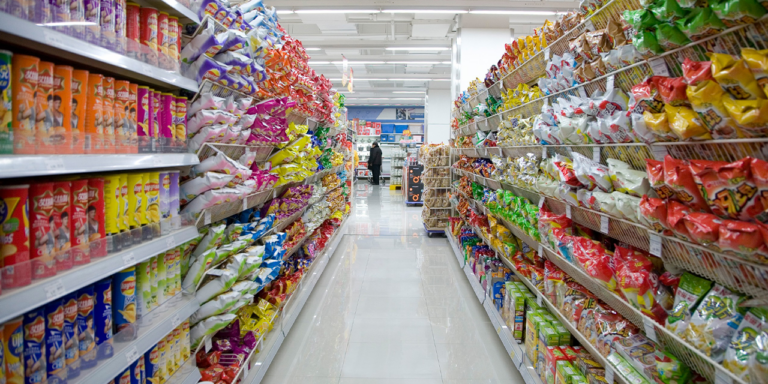Record-high inflation is putting tremendous pressure on retailers and consumer goods companies as they scramble to meet shoppers’ changing needs. As all costs — including labor, energy, distribution, and material costs — continue to rise, consumer goods companies face a critical need to employ new solutions that optimize their operations, prevent waste, and protect their bottom line.
Profitability in today’s economic setting requires consumer goods companies to react quickly to changes occurring at the retail and consumer level — leveraging capacity, resources, and inventory in the most cost-efficient way possible to protect margins while driving sales. Far more easily said than done.
To achieve success in this challenging environment, consumer goods companies must be able to rely on the three processes most critical to maintaining control of their demand.
- Demand sensing
- Demand shaping
- Effective collaboration with supply chain partners
But before diving into solutions, let’s first examine the specific challenges today’s brands need to address.
The challenge: Inflation pressure is changing demand patterns quickly
Consumer goods companies, especially those that manufacture and distribute fast-moving goods, are particularly vulnerable to both shrinking margins and shifting consumer demand patterns. Though inflation affects margins by increasing costs, fast-moving consumer goods companies can’t simply transfer those cost increases to their retail customers.
Furthermore, they must respond quickly and efficiently to changing demand patterns across their markets. For example, inflation is hurting consumer’s wallets, increasingly driving them to opt for lower-priced and private label options over their regular brands.
This same pressure is driving an increase in market share for discount retailers across the globe, leading to increased competition among retailers for consumers and market share. Many are reacting by offering more frequent promotions and adjusting assortments to include more private label and value options—decisions that expose consumer goods brands to the risk of being replaced by cheaper options and dropped from assortments altogether. As consumer goods companies compete for market share and space in retail assortments, competition between brands is accelerating.
With so many shifting variables, consumer goods companies are under immense pressure to secure their products in retailers’ assortments and meet demand cost-effectively. Simply said, they need to be able to detect changes in demand and respond quickly.
However, it is important to note that reacting quickly without a clear plan and detailed insight into inventories, supply, and production capacity will usually backfire and lead to overproduction, spoilage, shortages, and missed opportunities. At a time when anticipating demand is most critical, it’s also more complex than ever.
Traditional demand forecasts based on the events of the previous year simply are not enough to accurately predict demand in today’s rapidly changing environment. But brands can stay in control of their demand with the right solutions for demand sensing, demand shaping, and effective collaboration with retail customers.
Demand sensing, shaping, and collaboration: The fundamentals to maintaining control of demand
Consumer goods companies can stay on top of demand by turning to demand sensing technology supported by machine learning. Modern solutions provide accurate, automated short-term forecasts that can weigh a variety of complex factors, such as:
- Consumer behavior
- Prices
- Weather
- The impact of retailer promotions
- Inventory levels throughout the retailer and supplier network (including new product and seasonal fills, and even store-specific assortment changes)
Modern machine learning enables consumer brands to efficiently take a broad range of factors into consideration, enabling them to respond more quickly and accurately to the subsequent impact on demand.
Consumer goods companies can begin to embed accurate forecasts into their dynamic inventory and distribution plans, then feed that information into production plans to ensure efficient allocation of resources. For those who focus on perishable products, including ready-made meals and fresh items, these capabilities become critically important to balancing the risks of spoilage and lost sales.
With effective demand sensing in place, consumer goods companies can begin to use demand shaping strategies to actively influence demand for their products—instead of having to react to changes outside of their control. With digital twin technology, companies can leverage well-selected price incentives, strategic promotions, and product substitutions to effectively balance customer demand with available supply. Demand shaping also enables companies to accurately account for current and planned production capacity, supply shortages, and inventory levels.
To stay competitive in today’s market, consumer goods companies need end-to-end supply chain insight. When retailers and suppliers use technology to collaborate consistently and transparently based on shared data, they reduce uncertainties and unlock efficiencies throughout their supply chain. Collaboration opens the door to operational improvements and better customer satisfaction, and, when executed correctly, creates win-win opportunities for both retailers and consumer goods companies.
The right supply chain collaboration solution will provide consumer goods companies with valuable insight to reduce unnecessary uncertainties in demand. They’ll be able to see retailer plans and data around seasonal fills, new product ramp-ups, promotions, and assortments to plan their production more proactively.
Furthermore, the right tool will also minimize lost sales and operational costs by leveraging technologies such as machine learning and digital twin modeling to sense and shape demand in alignment with supply.
Demand patterns will continue to shift as the global economy adapts to inflation. By being proactive and meeting challenges head-on, consumer goods brands and their retail partners can ensure they make the smartest and most efficient business decisions possible in any economic situation.
While no one can predict how extensive or long-lasting the current disruptions will be, what is certain is that the companies that adopt these capabilities will emerge from this crisis as winners.
This article is the first of four focused on helping consumer goods companies navigate the market shifts we’re currently seeing across the globe. The following articles will provide an in-depth look at demand sensing, demand shaping, and supply chain collaboration.




